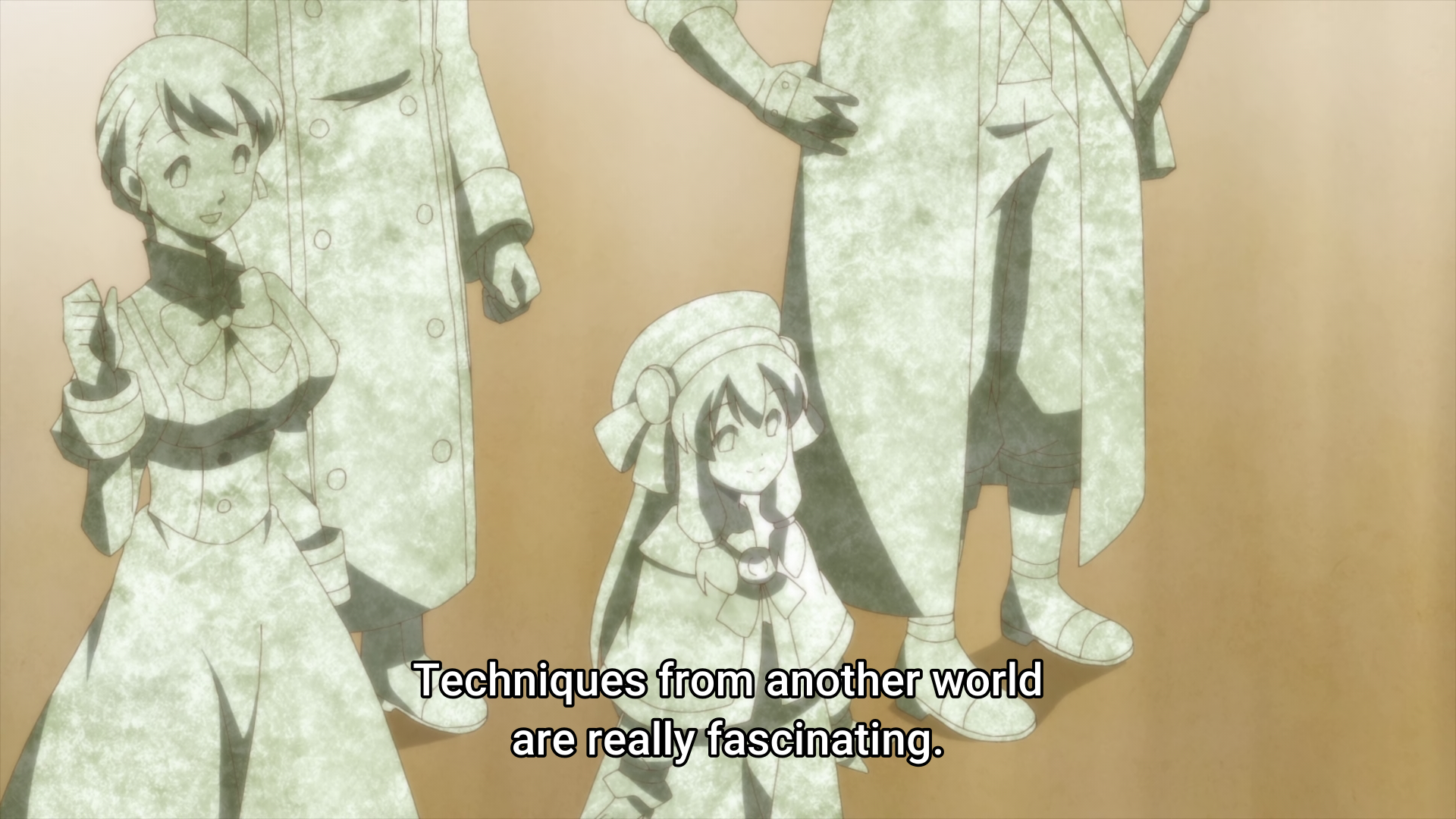Winter 2023 Season
14 January, 2023
The fall 2022 anime season led to concern in some circles, and optimism from some fans of other genres, that the modern isekai explosion was finally on a downswing. In retrospect, it was clearly nothing more than ordinary season-over-season variation.
With six (or seven; Hirogaru Sky Precure appears to be a reverse isekai from the summary, but does not begin for another three weeks) premiers, two continuations, and two sequels, isekai anime in winter 2023 is still going strong.
Whole books have surely been written on the interplay between fantasy, urbanization, and the rural idyll, and unease with modern society has been a part of the genre since Tolkien used England’s heavily industrial Black Country as the inspiration for Mordor – and the world of today is far less agrarian than at the time when Lord of the Rings was written.
Advancements in agricultural productivity have emptied farms and flooded cities with people not just in Great Britain, where the transition happened first, but by this point virtually everywhere in the world. Japan is no exception in this regard; indeed, Tokyo is at this point the world’s largest metropolitan area.
Not everyone wants to save the world. The phrase “slow life” has appeared in the title of more than one recent isekai anime, and although it is absent from this one, the concept is not. Sometimes, a pleasant existence isn’t one of quests and exploration, simply a more enjoyable and secure occupation than modern capitalism allows, often with demi-human friends and the assistance of magic.
The ideal of a return to farm life, away from the hectic pace of the city, is not without its share of emotional appeal – and as for the hard labor involved in such a lifestyle, it helps to have an almighty farming tool.
Isekai Nonbiri Nouka takes this to quite an extreme; our protagonist, who lived most of his adult life in a hospital, gets reincarnated by a god as an apology. No humanoid characters even appear in the first episode, apart from the protagonist, who of course raises crops for himself, and later some dogs (or are they wolves?) he befriends, not the market.
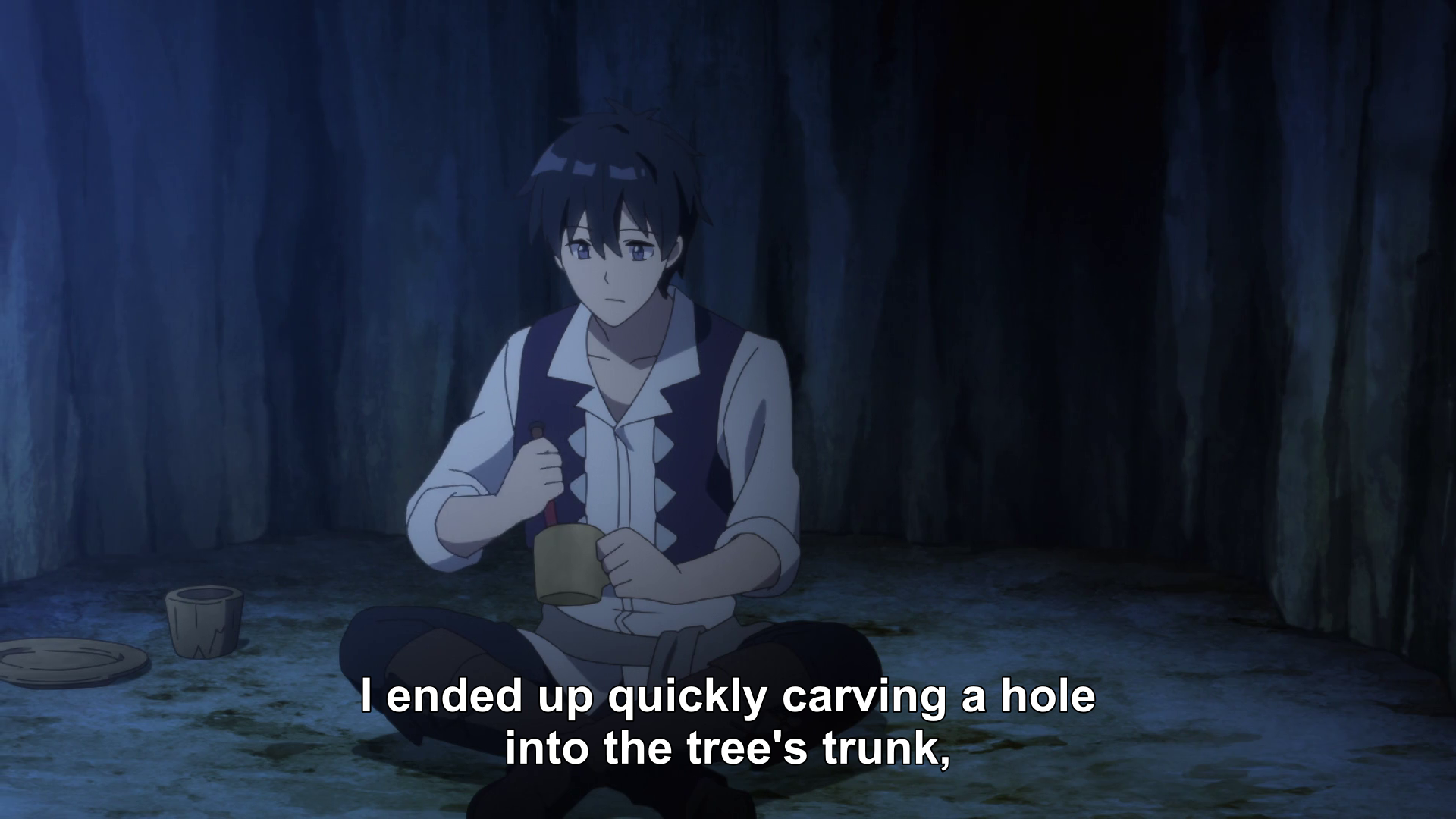

The story is focused on the practical tasks before him – making shelter for himself, digging a well, irrigating his lands – with the occasional random encounter. At one point he even fears he’ll forget how to speak, having gone through a winter alone.
 But he does meeting an injured vampire on his lands in the second episode, to whom he accidentally proposes to; the flash-forward before the prologue suggests that she is the first of many villagers to come.
But he does meeting an injured vampire on his lands in the second episode, to whom he accidentally proposes to; the flash-forward before the prologue suggests that she is the first of many villagers to come.
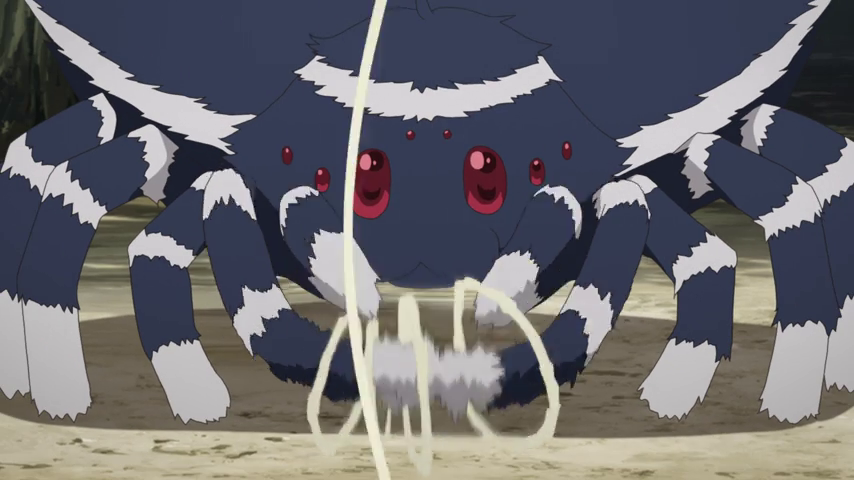
I’m making Isekai Nonbiri Nouka sound very niche, but this is not an anime one needs a deep love of agriculture to enjoy, at least not so far – only a healthy enjoyment of solitude. One is kind of reminded of a game of Civilization, or at least the part before enemies show up – just building item after item and converting wilderness into a rural settlement, and all the joy and challenges inherent to that process.
-
The term isekai implies some sort of travel or connection between the two worlds, and what travels is almost always actual characters. In the first two episodes of Tsundere Akuyaku Reijou Liselotte to Jikkyou no Endou-kun to Kaisetsu no Kobayashi-san, only voices travel, and if I wanted to be an excessive purist I could for that reason ignore this anime outright.
The idea of voices linking the worlds is not novel; Fushigi Yuugi uses it to great effect, with characters reading the book frequently interacting with those inside. Take away Miaka and just have Tetsuya and Keisuke reading to wholly fictional characters, switch the book with an otome game, and genderswap one of them (as if you’re playing an otoge, at least one of the two players is likely female) and you’d have something a lot like TsunLise.
The characters from the other world experience the words of our Earthly protagonists as those of gods, spoken to them with rainbow lights from the sky reminiscent of Digimon Adventure.

They seem to be altering the coded path of the game itself, and this is not just an anime about playing one; it’s a normal console game with a controller, but they understand Endou’s imitation of a baseball announcer, and later on the voice commands of both characters.
I find TsunLise’s concept fascinating. The Narou-keiera of isekai has often been criticized, not without justification, as formulaic, and finding a genuinely new or at least highly unusual variation on it is, if nothing else, an impressive feat, and enough to keep me watching. Apart from this dynamic, there’s little distinguishing it from typical villainess fare, but at least the characters are cute and we haven’t had enough villainess adaptations for me to get tired of them yet anyway.

-
The expectation of the isekai genre is that the main character, the one who enters the other world, comes from roughly the time and place of the author and target market – but this is an expectation, not a universal truth. Side characters from the distant past are a common enough trope – think Shizue in Tensei Shitara Slime Datta ken, or Shoryu from Juuni Kokuki - usually as predecessors of the heroes. And of course, in some series, such as Drifters or Realist Maou Niyoru Seiiki Naki Isekai Kaikaku, the question of how certain historical figures would react to encountering another world proves a strong foundation for the story.
Saikyou Onmyouji no Isekai Tenseiki gives us an onmyouji from Japan’s distant past as its title character; I believe he is from the Heian period, but this is based on his outfit. I may be conflating Heian clothes with onmyouji wear; all the anime’s first episode gives us is that he rebelled, failed, and died in the process. Then again, his comparison of his new life to “Europe” suggests a greater degree of geographical knowledge than could be expected in Japan before the nanban ships showed up, and he may be a late sengoku otherworlder.
He adapts quite well to his new setting, as spiritual power and onmyouji abilities are basically the same thing – befriending and tutoring a cute girl, protecting the manor from a giant salamander, and so on. The first three minutes are the best part and I hope it’ll be more than just a forgotten hook, a historical otherworlder is legitimately interesting and unusual.
 -
-
Realistically, there is no reason why a person from Earth would automatically understand the language of another world. Language on Earth has diverged in thousands of different, mutually incomprehensible ways; without any contact between worlds, any sort of mutual comprehension must be justified.
This is not a problem for isekai tensei stories, admittedly, but when one is summoned and still their old self, it can be an issue. Usually, language barriers are hand-waved away with magic, if they are mentioned at all – it is hard to tell much of a story when the characters can’t communicate. But failing to understand anyone at first, as in Juuni Kokuki or the manga Kanata Kara, can be a powerful way to underscore how lost and alone someone is, and in just how distant a place they find themselves; Rougo ni Sonaete Isekai de 8-manmai no Kinka wo Tamemasu’s first episode makes strong use of the plot device, and Mitsuha’s eventual friendship with Colette becomes all the stronger for it.
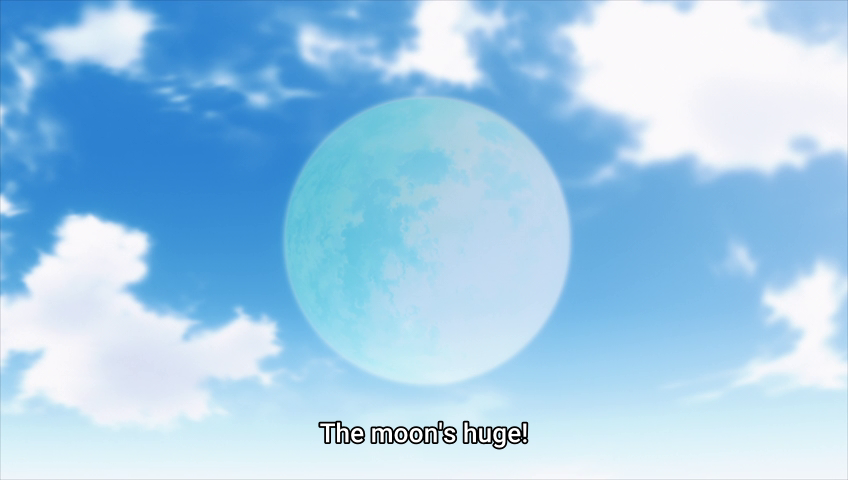

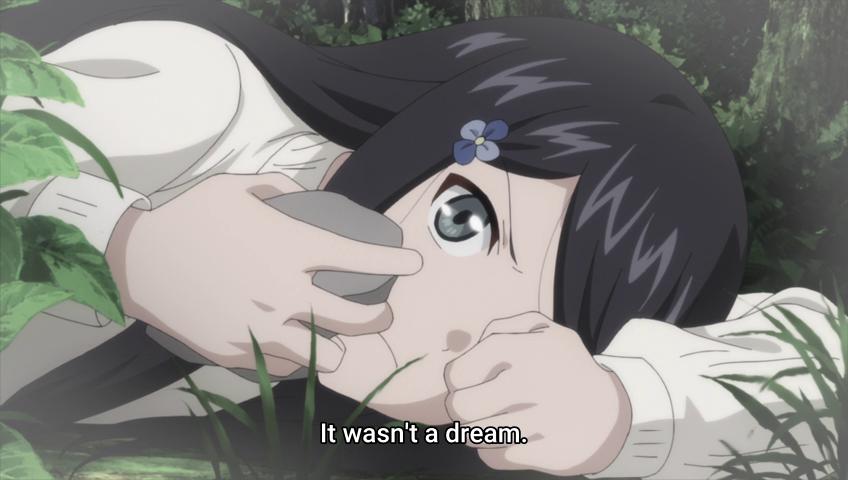
Unlike most isekai heroines, Mitsuha soon learns to freely go back and forth between worlds. Also unlike the few in her position, Mitsuha realizes the potential for arbitrage right away; even, say, Digimon Adventure 02’s Inoue Miyako never thinks of selling digital world goods on Earth or vice versa, while in the 2nd episode Mitsuha uses her newly acquired language skill to learn English, and exchanges an otherworldly gold coin for modern firearms from PMCs.
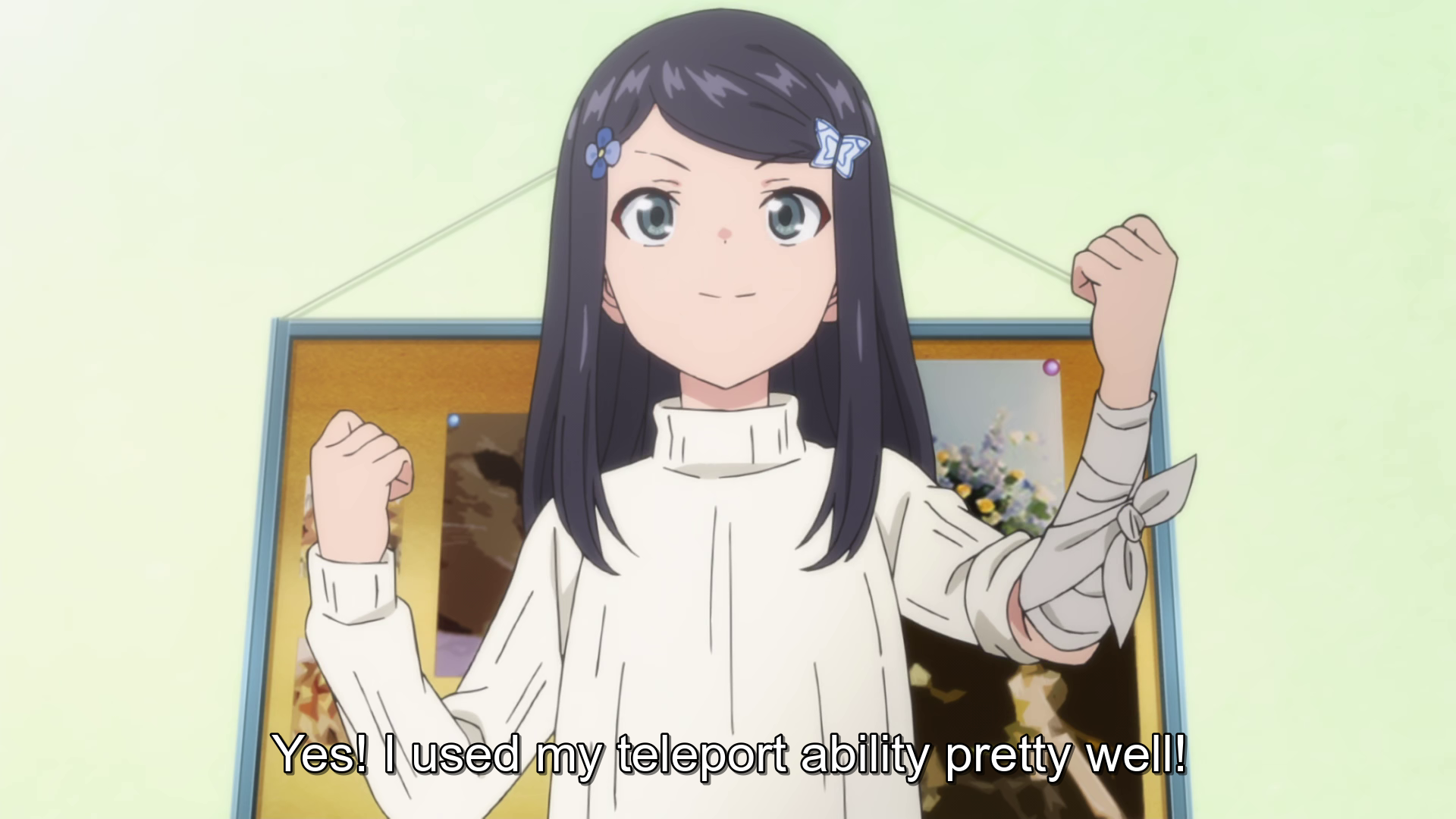
It is a sad commentary on the failings of 21st-century politics that saving enough for retirement has changed from an expectation to a fantastic dream, but there is nothing new about going to another world and thereby improving one’s material position in life; complete the quest and the king always gives a reward.
And I wish her luck. Even if we don’t, at least Mitsuha’s gonna make it.
-
I had initially assumed, just from watching the anime, that Benriya Saitou-san, Isekai ni Iku was adapted from a 4koma manga. I was wrong – although the source material is indeed a gag manga, it is not nearly that consistent of one with regard to the number of panels.
I’m not sure if it was possible to adapt this particular source material into a more coherent narrative, but I think it should’ve at least been attempted; it wouldn’t have killed the jokes and would’ve made it feel less confusing and disjointed. Naming characters minutes/chapters after introducing them is one of those things that just doesn’t work as well in anime as it does in gag manga.
That said, there’s a reason Rogues are one of the original four character classes. Being good with disarming traps is a very valuable skill in a fantasy world, and even moreso when you can offer them a flashlight.
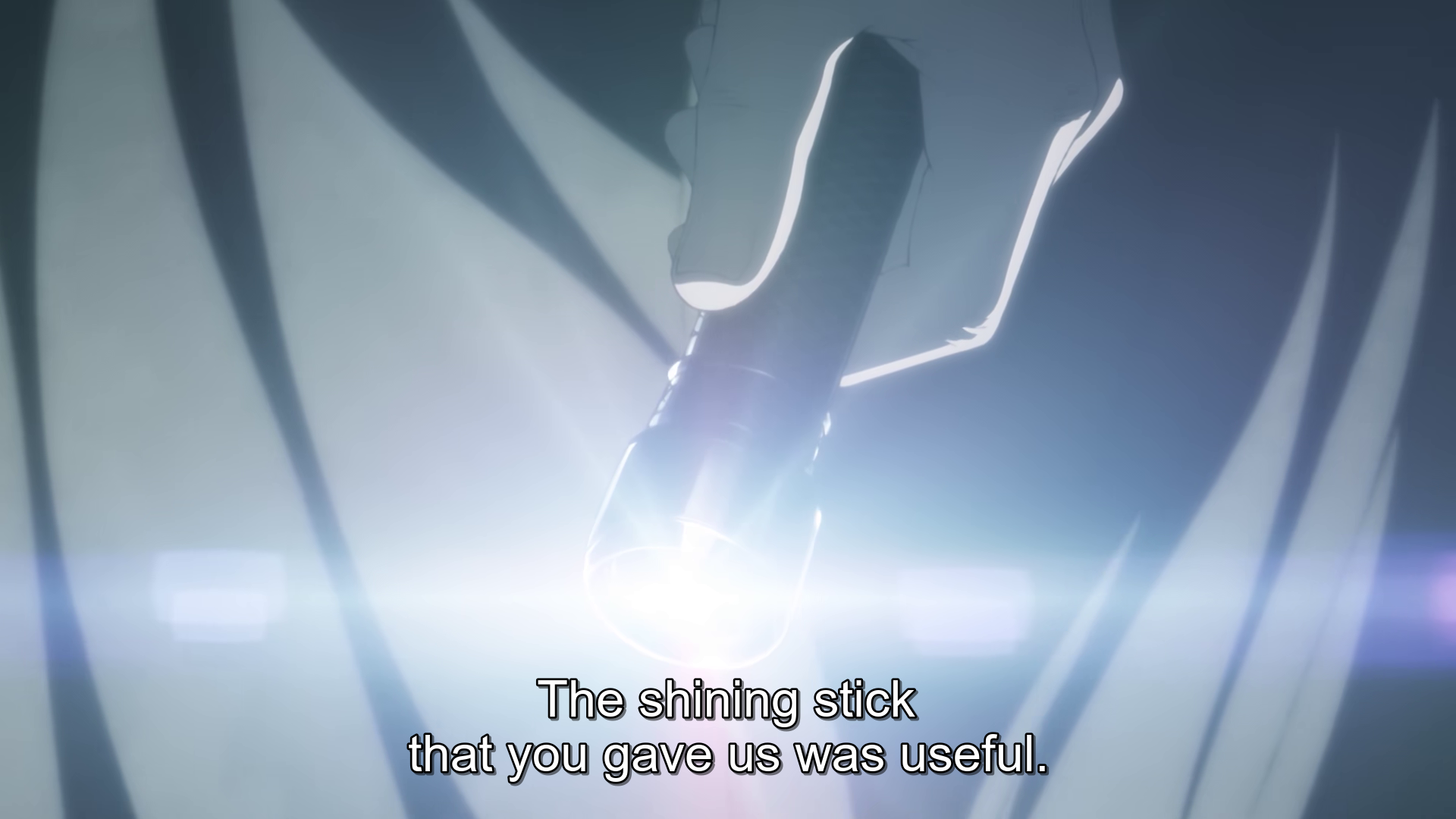
For the serious parts, the protagonist, Saitou, fits nicely into his new parts. While the jokes are a bit hit or miss, the first episode is worth watching for the quite M-rated gag about the kingdom’s unit of measurement alone.
-
Food anime is an old and popular genre, supporting enough series to be the theme of my local anime convention last year – Yakitake!! Japan and
They don’t personally appeal very much to me, as I’m too much of a picky eater for most of the foods in question, no matter how lovingly rendered, to look remotely appetizing – although I did enjoy Isekai Shokudou for the story around said foods.
I’m hoping Tondemo Skill de Isekai Hourou Meshi will be the kind of food anime where the rest of it is enough to hook me, and while an online grocery shopping skill is a bit useless in any non-food context, a kingdom with closed borders, a hero summoned with others and forgotten, and a giant wolf called a Fenrir with an immense appetite for a familiar at least offers a bit of promise.
-
After the first episode aired, I described Kage no Jitsuryokusha ni Naritakute mixing of languages in the main character calling himself the “stylish boukan slayer” as “incredibly chuuni”; in retrospect, I should have described the whole anime this way.
After fifteen episodes, it has become clear that Kage no Jitsuryokusha is the distilled essence of chuunibyou, reaching a level to which even Konosuba’s Megumin can only aspire to. This is not, however, a bad thing. Secret organizations, school attacks, imposters, harems, faked deaths, memory prisons… this show isn’t a serious drama, and is at times more concerned with “throw in everything cool” than narrative coherence. But in the process, it’s a ton of fun.
This week’s episode was mostly taken up with a tournament, with Rose’s efforts to escape a forced marriage as its cliffhanger.
Mairimashita, Iruma-kun is still going, and still combining a menagerie of demons with a charming school life. This week’s episode gave us illusions, spying on hot springs through super-hearing, and an exciting battle over a castle as the school’s long-awaited harvest festival continues. The manga remains a best-seller, and the anime lives up to its charm.
-
Indeed, Iruma-kun is achieving the impressive feat of getting parodied by another anime while it’s still running. I must confess that Shinka no Mi: Shiranai Uchi ni Kachigumi Jinsei is not really to my taste; it’s very much a comedy, and those can be difficult to enjoy when one does not share the writer’s sense of humor. The new season, Shin Shinka no Mi features a shift to a magic school, which (as much as I like Iruma-kun) misses the spirit of adventure I love in isekai, replacing it with a bit too much of a routine.
but I do enjoy the thing it’s spoofing, so maybe I’ll like the shenanigans of class F (an obvious take on Iruma-kun's Abnormal Class) a bit more than I did season 1.
-
I must reluctantly confess that I forgot entirely that Kami-tachi ni Hirowareta Otoko was actually an isekai anime at all and not just narou-kei fantasy, which says something about how much of a role the protagonist’s past life plays in the story.
Anyway, Ryoma has a verifiable army of slimes and they’re very useful in business.
It’s a slow life show, and it’s a happy one.
-
It should also be noted that Tensei Oujo to Tensai Reijou is, in the most technical sense, an isekai anime; the "tensei oujo" of the title, Anisphia, is indeed reincarnated from Earth. I can't speak to the source material, but the first episode of the anime expresses this in a wordless flashback to an airplane and mentioning her dream of flight when she finally learns to fly; this update is belated because I actually forgot what world she was reincarnated from.
The isekai aspect plays such a minor role in the story that I don't really have a lot to say about it, if you enjoy it it'll be more for the fantasy yuri than the isekai part, I think.
With such a wide variety of isekai anime, I’m looking forward to the rest of Winter 2023; not all of it is to my personal taste, but this cour should give isekai fans of every stripe something to enjoy.
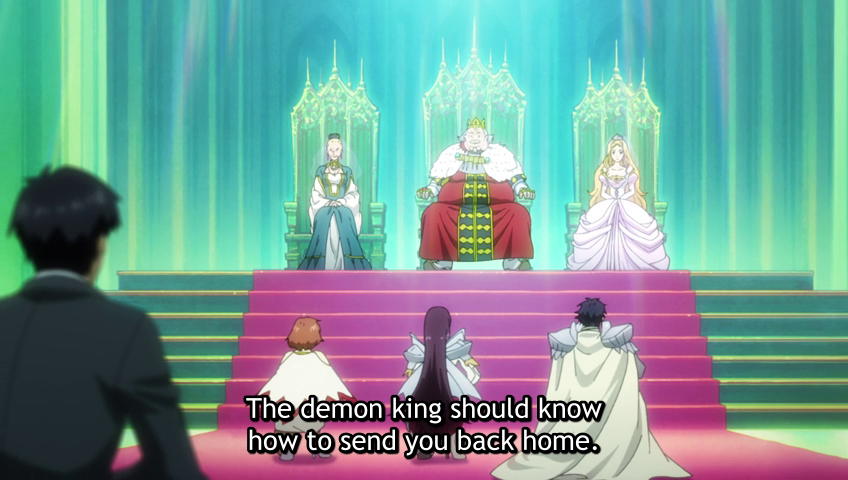


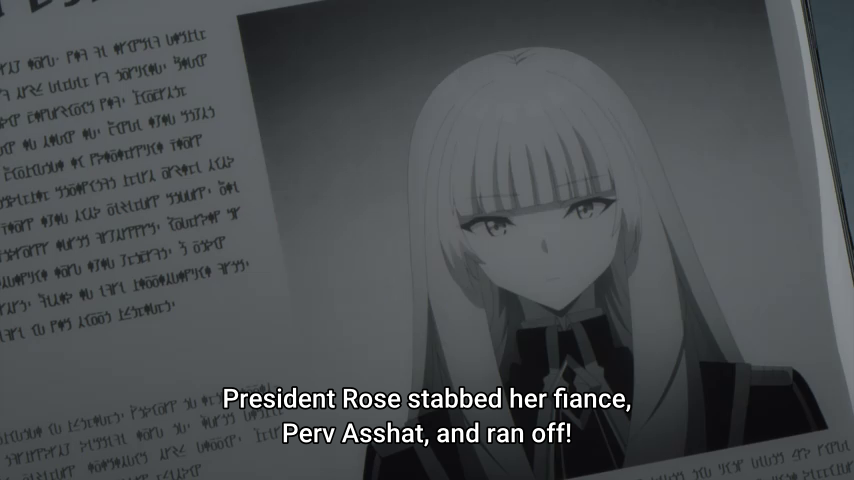 -
-

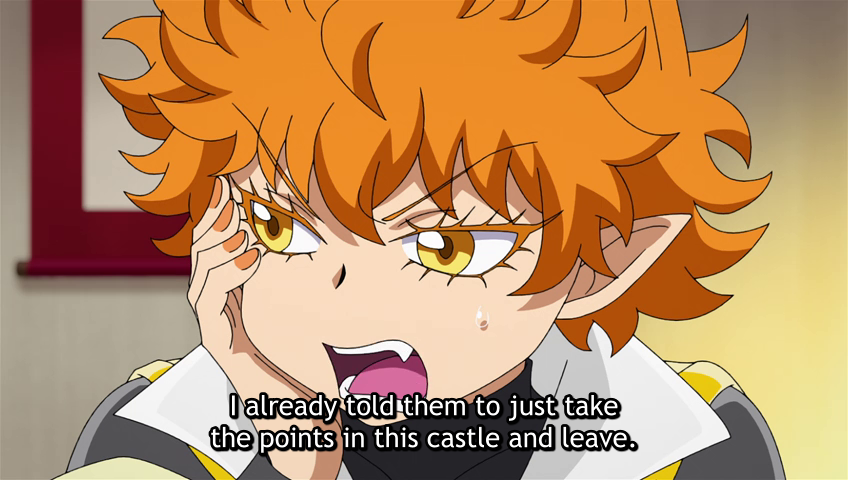
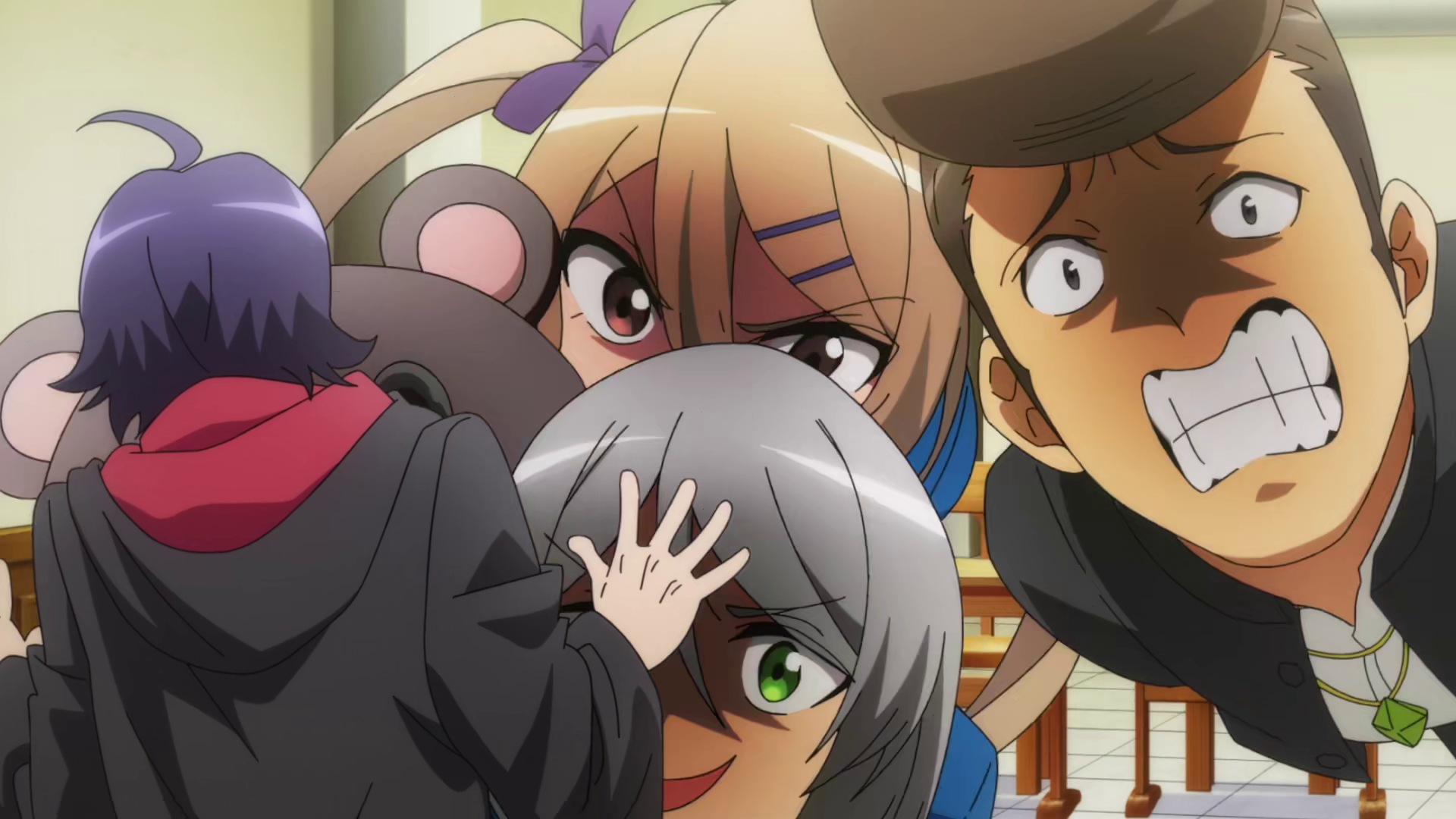
 By this point he’s the manager of a company. He meets the god of technology and craftsmanship this week, who praises him; it’s way better than working for a black company.
By this point he’s the manager of a company. He meets the god of technology and craftsmanship this week, who praises him; it’s way better than working for a black company.
